Michigan vegetable crop report – June 14, 2023
Some lucky growers got some rain Tuesday, and Thursday may bring more, but irrigation is still needed for most farms.

Weather
Watch Jeff Andresen’s weather update.
The forecast calls for:
- Mostly sunny and warmer Wednesday. Scattered showers and thundershowers possible north by late afternoon spreading southward overnight intoThursday. Best chances for rainfall east lower MichiganI.
- Mostly fair and warmer Friday through the weekend into early next week.
- High temperatures in the mid and upper 70s degrees Fahrenheit Wednesday warming to the upper 70s F and low 80s F Friday and to the low and mid 80s F by early next week. Low temperatures from the mid 40s F to low 50s F Thursday warming to the 50s F this weekend.
- Medium range guidance generally calls for above normal mean temperatures and normal to below normal precipitation totals for the last 10 days of June.
Check out the asparagus section below and the Michigan State University Extension article, "Dry forecast: How will that impact weed control?" about the impacts of this weather on herbicides. See below for impacts on fertility.
Weed of the week
Canada thistle (a.k.a creeping thistle; Cirsium arvense) is a perennial weed in the Sunflower family. Unlike its close cousin bull thistle, Canada thistle spreads not only by wind-dispersed seeds but also clonally through underground rhizomes. While this weed is common in perennial cropping systems (asparagus plantings, orchards, pastures, etc.) where its root system is not regularly disrupted by tillage, it can also overrun annual vegetable fields.
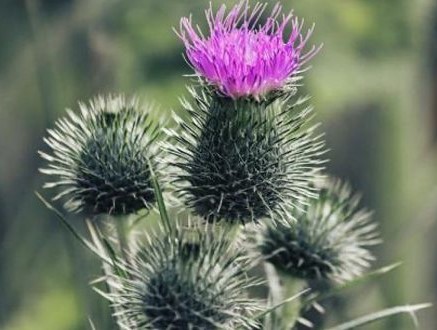
When it comes to managing severe infestations of Canada thistle (or any other perennial weed), targeting and depleting the root system is essential. Contact or locally-systemic herbicides can kill seedlings propagated from seed and above-ground tillers emerging from subterranean rhizomes. This elimination of new growth is important to keep the plant using up its root reserves without the ability to replenish them through photosynthesis. Systemic herbicides like Quinstar (quinclorac), glyphosate, Sandea (halosulfuron), and Stinger (clopyralid) are among the most effective in controlling Canada thistle.
Non-chemical approaches like tillage, mowing, the use of cover crops for suppression, or a combination of all three may also be used to deplete the roots by eliminating shoots. This is a process that requires patience - multiple years are needed to exhaust a well-developed rhizome network. For more information on thistle management, check out the University of Delaware factsheet “Canada Thistle Control in Cropland”.
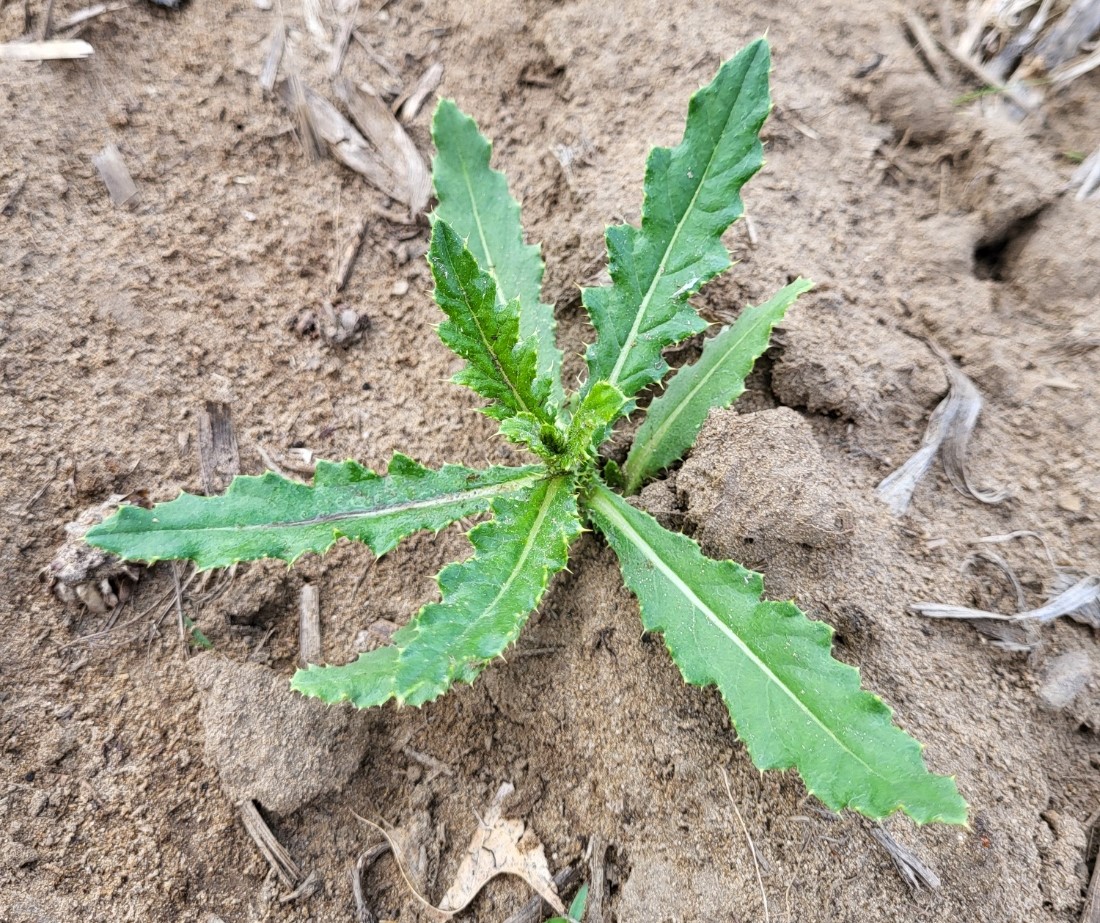
2023 MSU Extension Southeast Michigan Farmer Survey
MSU Extension is pleased to announce our 2023 Southeast Michigan Farmer Needs Assessment Survey. This survey will gather information about your farm and your potential interest in learning more about various farm-related topics. The information gathered will inform future programs and educational opportunities offered by MSU Extension educators for agricultural producers in southeast Michigan. This survey will take approximately 10 minutes to complete and is accessible at the link below:
Take the 2023 MSU Extension Southeast Michigan Farmer Needs Assessment Survey!
Feel free to share the survey link with other growers. We welcome any participation in the survey in order to help Michigan State University Extension better serve its communities.
Crop updates
Asparagus
As more fields are harvested for the last time it is time to think about the developing fern and cladophylls (needle-like branches) from purple spot. The disease first appears as tan to brown lesions that may expand, merge together and cause defoliation. Premature defoliation of the asparagus fern limits the plant’s photosynthetic capability, thereby decreasing carbohydrate reserves in the crown for the following year’s crop. This can reduce yield especially when premature defoliation occurs in consecutive years. Once harvest has concluded and the fern has developed, fungicides may be applied in conjunction with the TOM-CAST disease forecasting system. TOM-CAST is a standard in most commercial asparagus production systems in Michigan. This disease forecaster alerts growers to protect the asparagus fern only when the environmental conditions include extended dew or rainy periods accompanied by warm temperatures.
When spraying the fern for purple spot, rotate among products with different FRAC codes to reduce the possibility of resistance developing in the purple spot fungus. The FRAC code is an alphanumeric code assigned by the Fungicide Resistance Action Committee and is based on the mode of action of the active ingredient. The fungicide azoxystrobin (FRAC 11) is effective against purple spot and can be alternated with the fungicides chlorothalonil (FRAC M5) or mancozeb (FRAC M3).
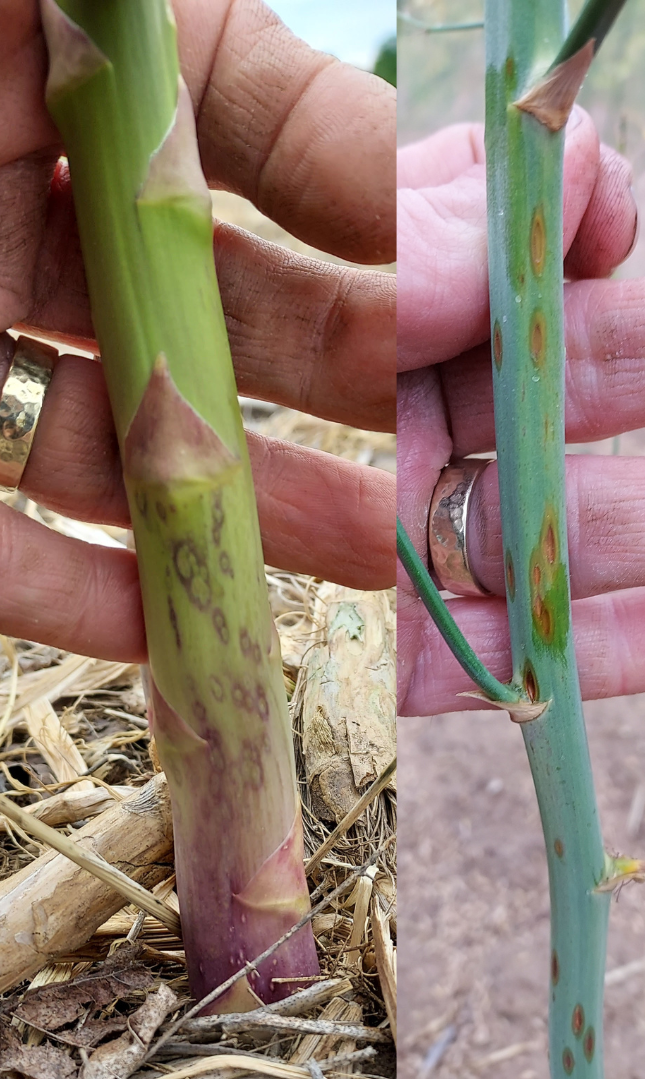
Carrots/celery
So far the Szendrei lab has not detected any aster-yellows infested leafhoppers in Michigan.
For celery, so far scouts have been catching typical numbers of aster leafhoppers, as well as some tarnished plant bug. Aphid issues have not been spotted yet.
Cole crops and leafy greens
Bok choy, head lettuce, and cut-leaf greens are going to market on some farms.
Cabbage maggot damage continues to haunt growers of transplanted brassicas, but it is unlikely additional action will be helpful. Patches of plants that appear to be stuck in an early stage of development may be held back by these root feeders. However, this spring batch of maggots will soon complete development and are protected from insecticide application by the roots and soil.
Transplant tray drenches with Verimark are the best way to protect these early season plantings. This is because concentration is key with this pest. The rootball and stem base are where product needs to be concentrated, that’s where hatching maggots will try to enter and feed on the roots. It is much easier to accomplish this in the transplant tray, where a high concentration can be applied right to the plug, which carries it out to the field. Product applied beyond this zone is wasted. Postplant drenches may be of some help, but it is difficult to get product where it needs to go to be effective (drenches require very high water volume and banded applications).
But, we are most likely beyond the point of needing to do this automatically. Past experience has also shown that cabbage plantings made after May are typically just fine; and some growers have not bothered protecting these. Napa cabbage and the root crops are the exception, and can have issues all season long.
Verimark is a costly product, but consider it also provides early-season protection against caterpillars and flea beetles. Think of it as a “package deal,” the cost can get spread across some other pest management needs.
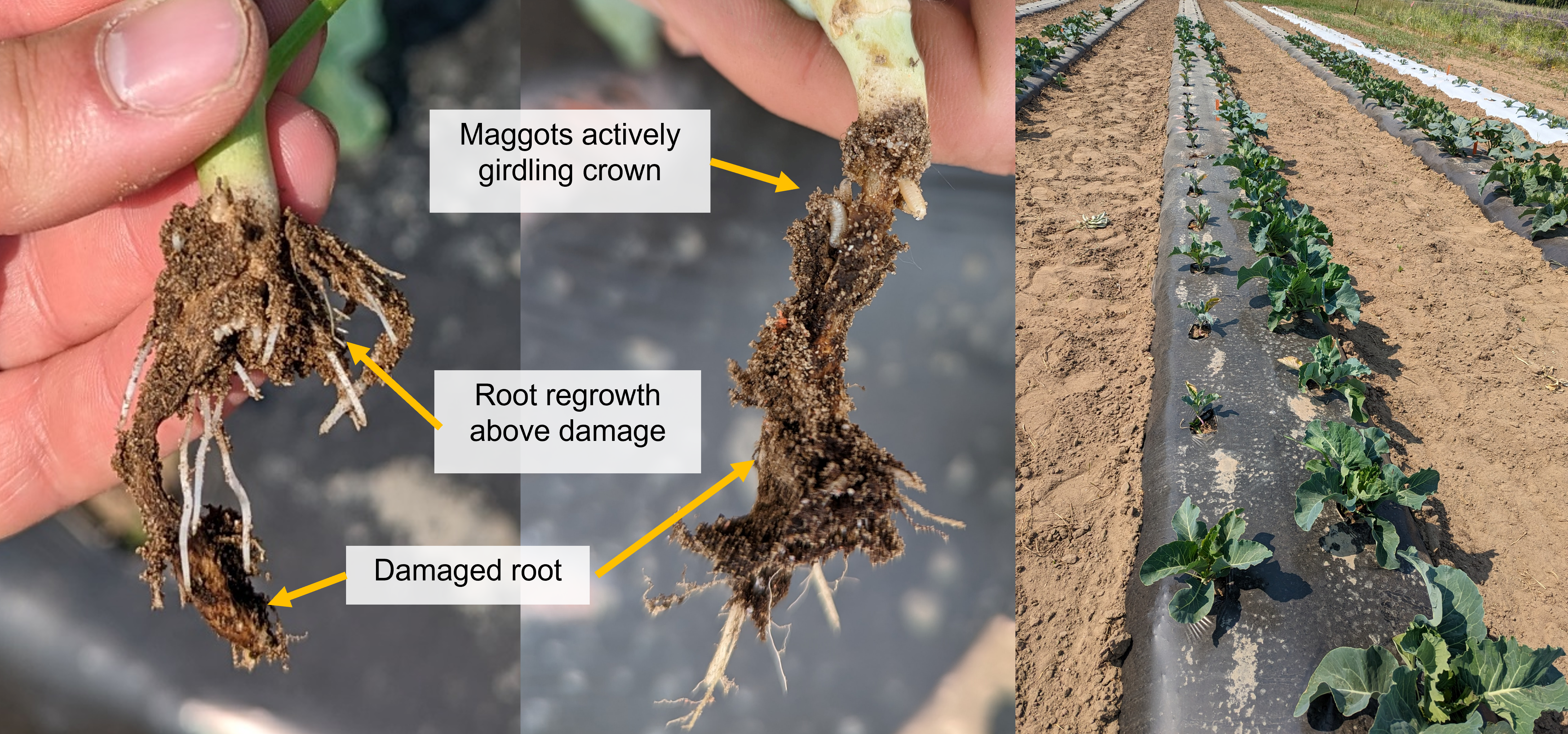
Cucurbits/pickles
Cucurbit planting continues across lower Michigan. Pumpkins and hard squash plantings are starting up this week for fall markets. Summer squash were harvested this week and cucumbers are close behind. Watermelons transplanted early May under row cover are beginning to develop fruit.
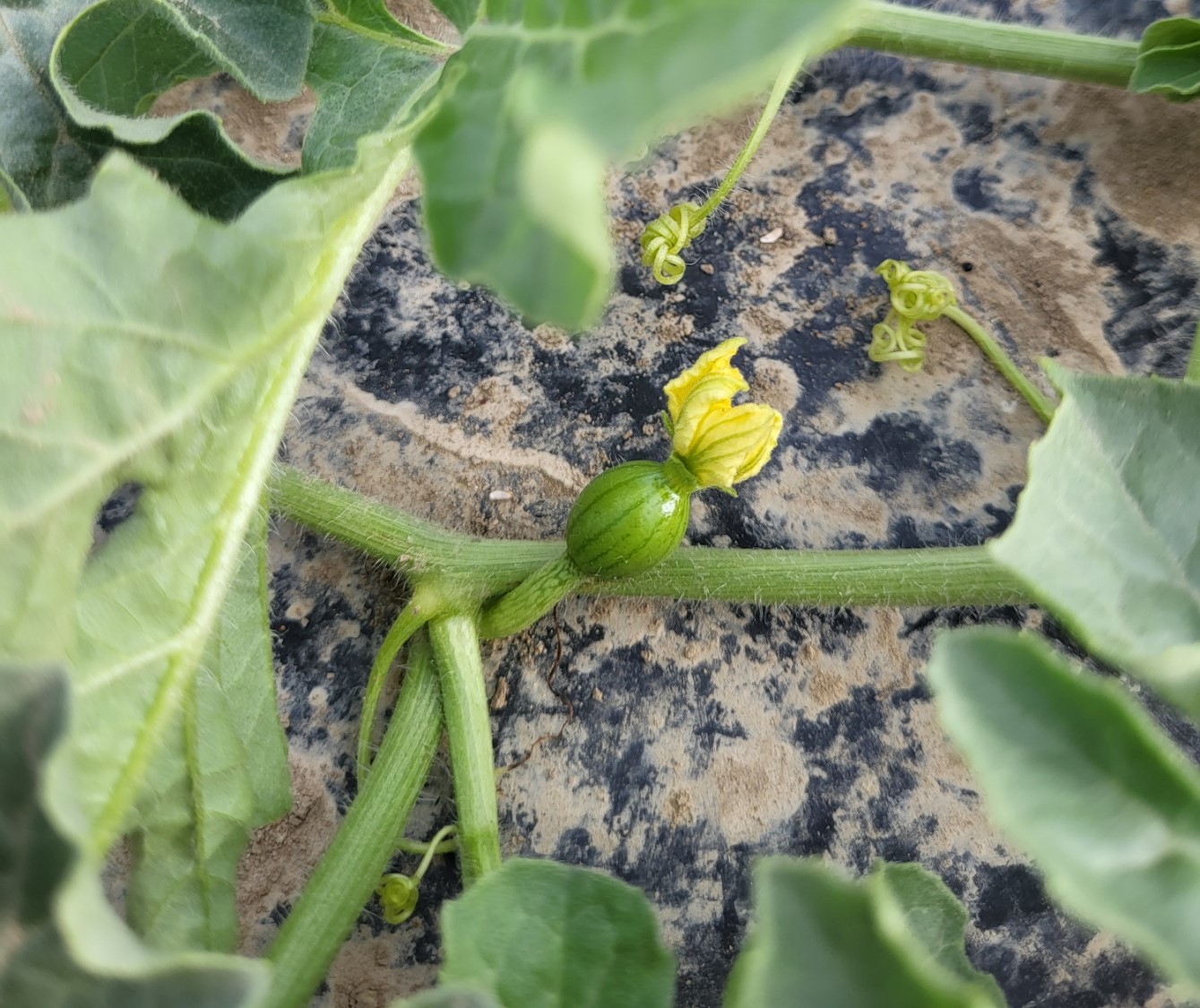
Clade 2 downy mildew infects cucumbers and melons and spores from this subtype were trapped in Bay County this week. The closest known field infection was found in New Jersey on June 13. Stay on the lookout for this pathogen in pivot irrigated fields.
Phrustrated with Phytophthora? Take a peek at the Hausbeck lab’s plethora of factsheets, which contain updated cultural and fungicide recommendations. Some growers print these out and reference them all season.
Keep these cultural practices in mind to limit the damage from this destructive pathogen.
- •Plant into well-drained, tiled fields
- •Use raised beds and drip irrigation
- •Avoid using surface water for irrigation
- •Irrigate sparingly from a well
- •Rotate crops
- •Scout fields regularly for Phytophthora
- •Remove any diseased plants and adjacent healthy plants
- •Apply fungicides preventively and at short intervals when needed
- •Remove fruits from field as quickly as possible and store in a warm, dry place
- •Powerwash equipment after it has been in infested fields
- •Do not dump diseased culls in production fieldsgement Strategies
Weed control and crop safety are always questions with cucurbits. Check out this table by Dr. Sushila Chaudhari, which lists the options, their strengths, and key notes. Also check out this helpful article from Minnesota.
Fruiting vegetables
Between-plastic cultivation and trellis building are happening this week. Field tomatoes and peppers are flowering. Colorado potato beetle can be found on eggplants.
To graft or not to graft? Grafted tomato/cucurbit transplants offer the best of both worlds - desirable fruit quality parameters from scion genetics combined with a hardy disease-resistant rootstock. Growing a high-value crop like tomatoes in a high tunnel multiple years in a row can be tempting, but leads to buildup of soilborne pathogens (Fusarium wilt, Verticillium wilt, corky root rot, etc). Use of grafted tomatoes can allow you to maintain productivity when growing tomatoes year after year in the same space.
However, if you are not dealing with soilborne disease pressure, or are targeting an early market, then the added expense of purchasing grafted transplants may not be justified. A common side-effect of grafted plants is a delayed first-harvest due to their vigor, and under a normal fertility program, they can even become “over-vigorous”, as they generally are more efficient at using fertilizer and therefore require less of it. The abundant fertility may lead to excessive vegetative growth instead of fruit, or nutrient interactions that cause abiotic disorders (ex. Too much potassium/ammonium can lead to magnesium deficiencies in lower foliage or increased blossom end rot.) Backing off on fertilizer may allow you to recoup some of your investment on grafted transplants if you are noticing overly bulky plants.
The higher yield per plant from grafted vegetables may permit you to lower planting population through increased in-row spacing, which offers a number of benefits (reduced transplant cost, less resource competition between crops, better canopy penetration with pesticides, etc.). Matthew Kleinhenz at the Ohio State University is performing trials looking at how to optimize plant spacing for yield and quality in grafted watermelon this summer.
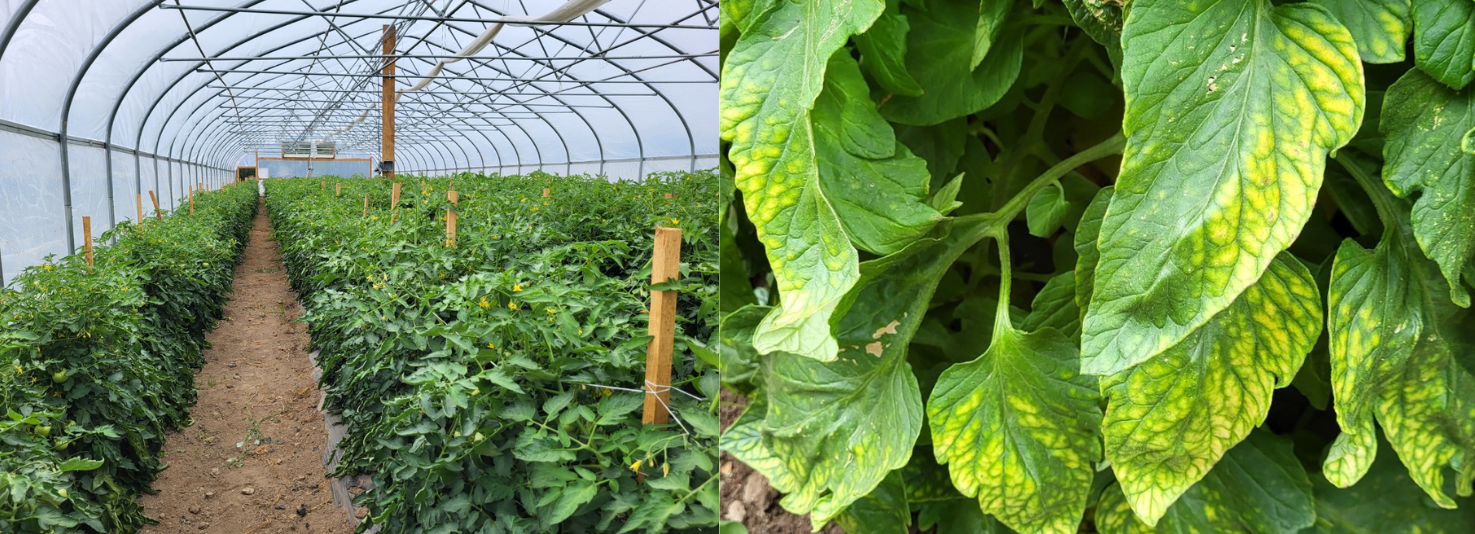
Onions
Please find the latest onion thrips recommendations from Cornell University in article format, a graphical “choose your own adventure” spray format is here.
Consider bookmarking last week’s update, which contains Dr. Hausbeck’s trial-based info on Stemphylium spray programs.
Root crops
Spring turnip harvest was starting this week in Michigan, and as roots get pulled spring issues (and also lots of great product) come to light.
This year again brought home the importance of rotation in brassica root crops; cabbage maggot control is an uphill battle when there is an overwintering population. Keep in mind that this pest is mobile, too. This means it is important to consider the history of the fields around the one being sown. For example, successive generations may hop from a spring planted to fall-planted field, overwinter there, and colonize yet another nearby field the following spring. Cabbage maggot egglaying was ongoing at sites MSU Extension was monitoring, though we are past the spring peak. The first summer peak is likely yet to come, based on degree days.
If you are seeing damage, keep in mind that it’s often worst right along field edges. This means there may be a much higher percentage of good product further into the field. When there are issues, some growers pull samples throughout a field in advance of harvest to figure out which areas to focus on.
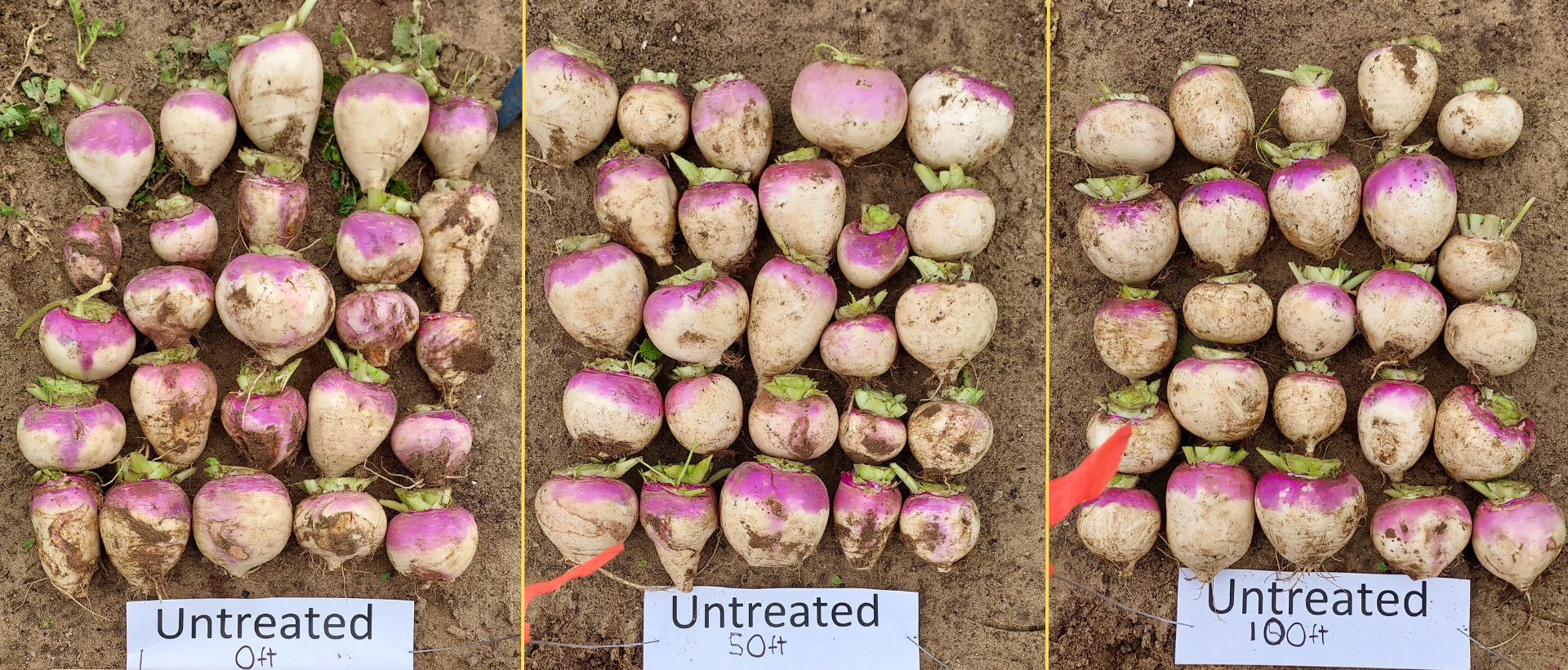
Sweet corn
Succession plantings continue. Sweet corn is progressing well through the vegetative stages where there is adequate moisture.
The first flight of European corn borer (ECB) adult moths is occurring across the state. Early planted sweet corn successions are at highest risk of feeding damage in this initial flight as moths are attracted to the largest plants to lay their eggs on. Corn plants < 2’ tall have significant tissue concentrations of the naturally-occuring defense chemical DIMBOA that deters insect feeding. DIMBOA levels drop off in above-ground growth as the plant gets larger, making them more susceptible to caterpillar damage. The second flight and third flights of ECB tend to be the most economically important as more corn is mature by then.
Strawberries
Both plasticulture and matted row berries are being harvested now. Leaf spots and fruit rots are starting to show up too. The University of Minnesota has a nice pictorial of these diseases. Leaf pathogens are not typically a target for sprays because they soon get defoliated through renovation anyway, but fruit rots are important to manage for harvest quality.
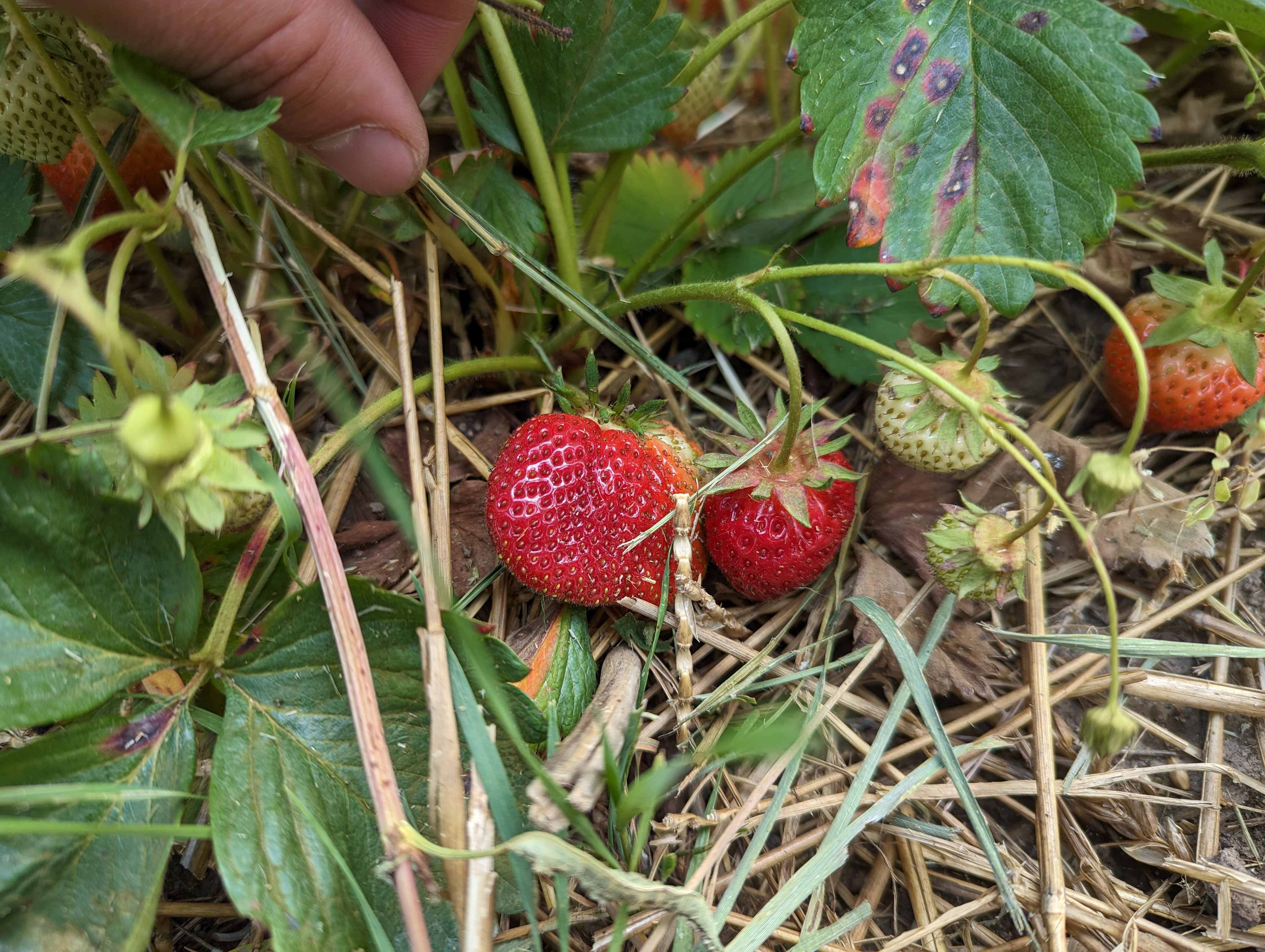
Events
- June 15, 7–8 a.m., Field Crops Virtual Breakfast: White Mold Management In Soybean
- June 16, 1:30–2:30 p.m. CT, Farm Bill Friday focused on Consolidation
- June 19, 5:30-7 p.m., Monday Night Southwest Michigan Fruit IPM Meeting
- June 23, 12–1 p.m. CT, Farm Bill Friday focused on Regional Food Systems
- June 26, 5:30-7 p.m., Monday Night Southwest Michigan Fruit IPM Meeting
- June 28, 9:30 a.m.-3 p.m., MSU Weed Tour 2023
- June 29, 7–8 a.m., Field Crops Virtual Breakfast: Cercospora Leaf Spot Management In Sugar Beets
- July 6, 7–8 a.m., Field Crops Virtual Breakfast: Strategies For Efficient Irrigation Water Use
- July 13, 7–8 a.m., Field Crops Virtual Breakfast: Cover Crops After Wheat
- July 14, 12–1 p.m. CT, Farm Bill Friday focused on Climate & Conservation
- July 20, 7–8 a.m., Field Crops Virtual Breakfast: Tar Spot
- July 20, 9 a.m. - 1:30 p.m., In-Field and Edge-of-Field Conservation Practice Field Day
- July 27, 7–8 a.m., Field Crops Virtual Breakfast: Bugs And More Bugs!
- August 3, 7–8 a.m., Field Crops Virtual Breakfast: Farm & Truck Vehicle Regulations And Safety
- August 3, 8 a.m. - 4 p.m., 2023 Montcalm County Field Day
- August 10, 7–8 a.m., Field Crops Virtual Breakfast: How To Get The Best Out Of Your Drainage System
- August 17, 7–8 a.m., Field Crops Virtual Breakfast: "Hot Topic" Q & A Session
- August 24, 7–8 a.m., Field Crops Virtual Breakfast: Timing The Last Irrigation Application
- August 31, 7–8 a.m., Field Crops Virtual Breakfast: Setting The Stage For Record Breaking Wheat Yields
- September 7, 7–8 a.m., Field Crops Virtual Breakfast: Marketing Your Grain Crops
- September 14, 7–8 a.m., Field Crops Virtual Breakfast: Monitoring Nematode Resistance In Soybeans
- September 21, 7–8 a.m., Field Crops Virtual Breakfast: Fall Weed Control
This work is supported by the Crop Protection and Pest Management Program [grant no 2021-70006-35450] from the USDA National Institute of Food and Agriculture. Any opinions, findings, conclusions, or recommendations expressed in this publication are those of the author(s) and do not necessarily reflect the view of the U.S. Department of Agriculture.



 Print
Print Email
Email

